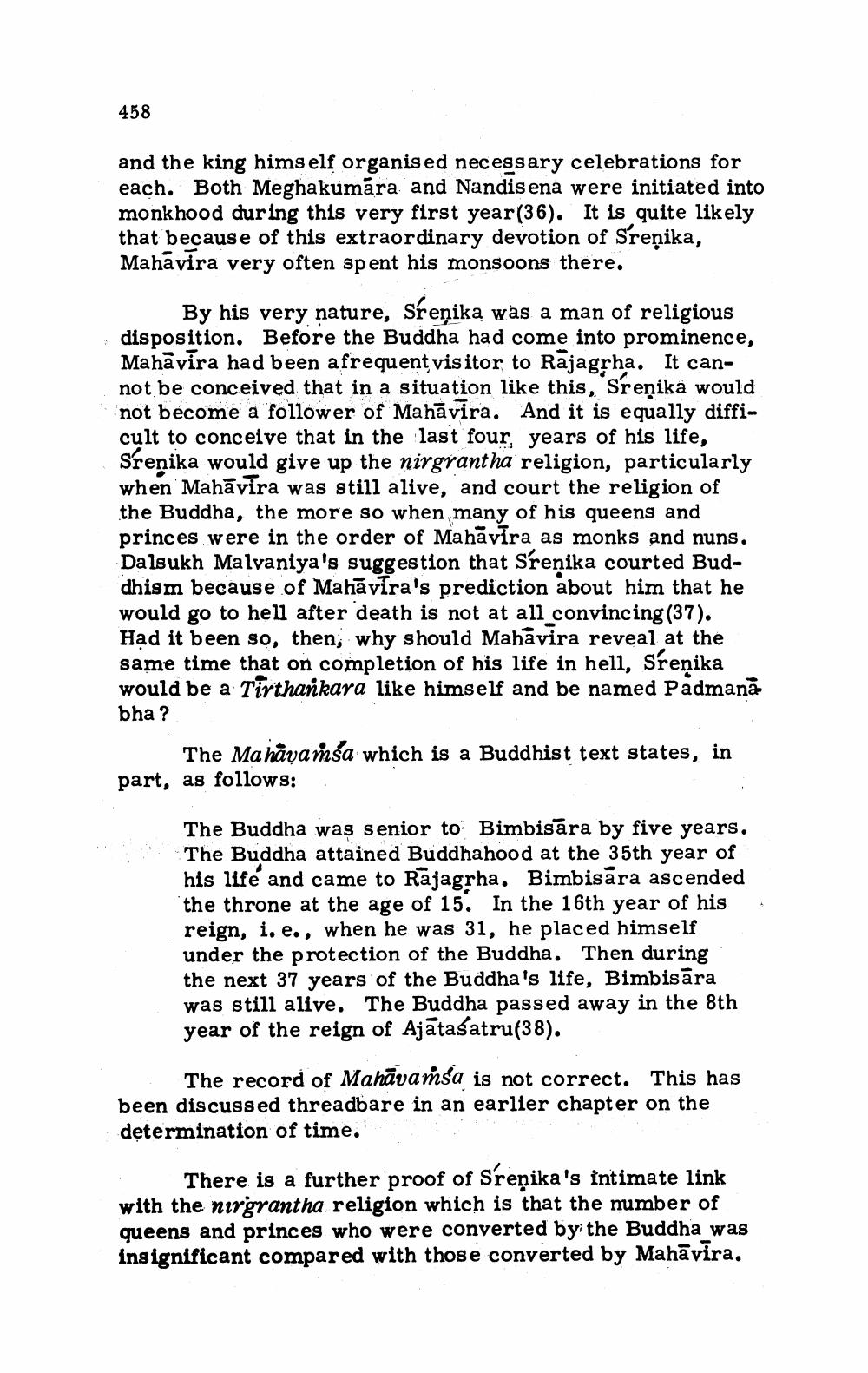________________
458
and the king himself organised necessary celebrations for each. Both Meghakumara and Nandis ena were initiated into monkhood during this very first year(36). It is quite likely that because of this extraordinary devotion of Sreņika, Mahavira very often spent his monsoons there.
By his very nature, Srenika was a man of religious disposition. Before the Buddha had come into prominence, Mahāvira had been afrequent visitor to Rajagrha. It cannot be conceived that in a situation like this, Srenika would not become a follower of Mahā vira, And it is equally difficult to conceive that in the last four years of his life,
ka would give up the nirgrantha religion, particularly when Mahāvira was still alive, and court the religion of the Buddha, the more so when many of his queens and princes were in the order of Mahavira as monks and nuns. Dalsukh Malvaniya's suggestion that Srenika courted Buddhism because of Mahā vira's prediction about him that he would go to hell after death is not at all convincing (37). Had it been so, then, why should Mahāvira reveal at the same time that on completion of his life in hell, would be a Tirthankara like himself and be named Padmana bha?
The Manāyamsa which is a Buddhist text states, in part, as follows:
The Buddha was senior to Bimbisāra by five years. The Buddha attained Buddhahood at the 35th year of his life and came to Rājagrha. Bimbisāra ascended the throne at the age of 15. In the 16th year of his reign, i. e., when he was 31, he placed himself under the protection of the Buddha. Then during the next 37 years of the Buddha's life, Bimbisara was still alive. The Buddha passed away in the 8th year of the reign of Ajātaśatru(38).
The record of Mahāvaṁsa is not correct. This has been discussed threadbare in an earlier chapter on the determination of time.
There is a further proof of Sreņika's intimate link with the nirgrantha religion which is that the number of queens and princes who were converted by the Buddha was insignificant compared with those converted by Mahāvira.




